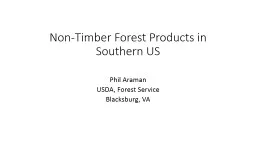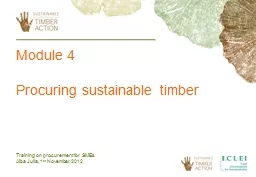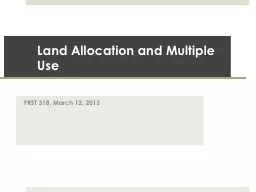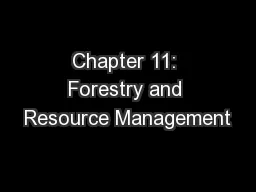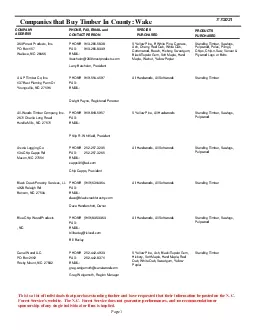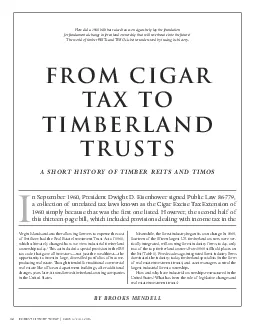PPT-Non-Timber Forest Products
Author : faith | Published Date : 2022-06-01
in Southern US Phil Araman For Jim Chamberlain USDA Forest Service Blacksburg VA NonTimber Forest Products Originate from forest plants and fungi not timberbased
Presentation Embed Code
Download Presentation
Download Presentation The PPT/PDF document "Non-Timber Forest Products" is the property of its rightful owner. Permission is granted to download and print the materials on this website for personal, non-commercial use only, and to display it on your personal computer provided you do not modify the materials and that you retain all copyright notices contained in the materials. By downloading content from our website, you accept the terms of this agreement.
Non-Timber Forest Products: Transcript
Download Rules Of Document
"Non-Timber Forest Products"The content belongs to its owner. You may download and print it for personal use, without modification, and keep all copyright notices. By downloading, you agree to these terms.
Related Documents

